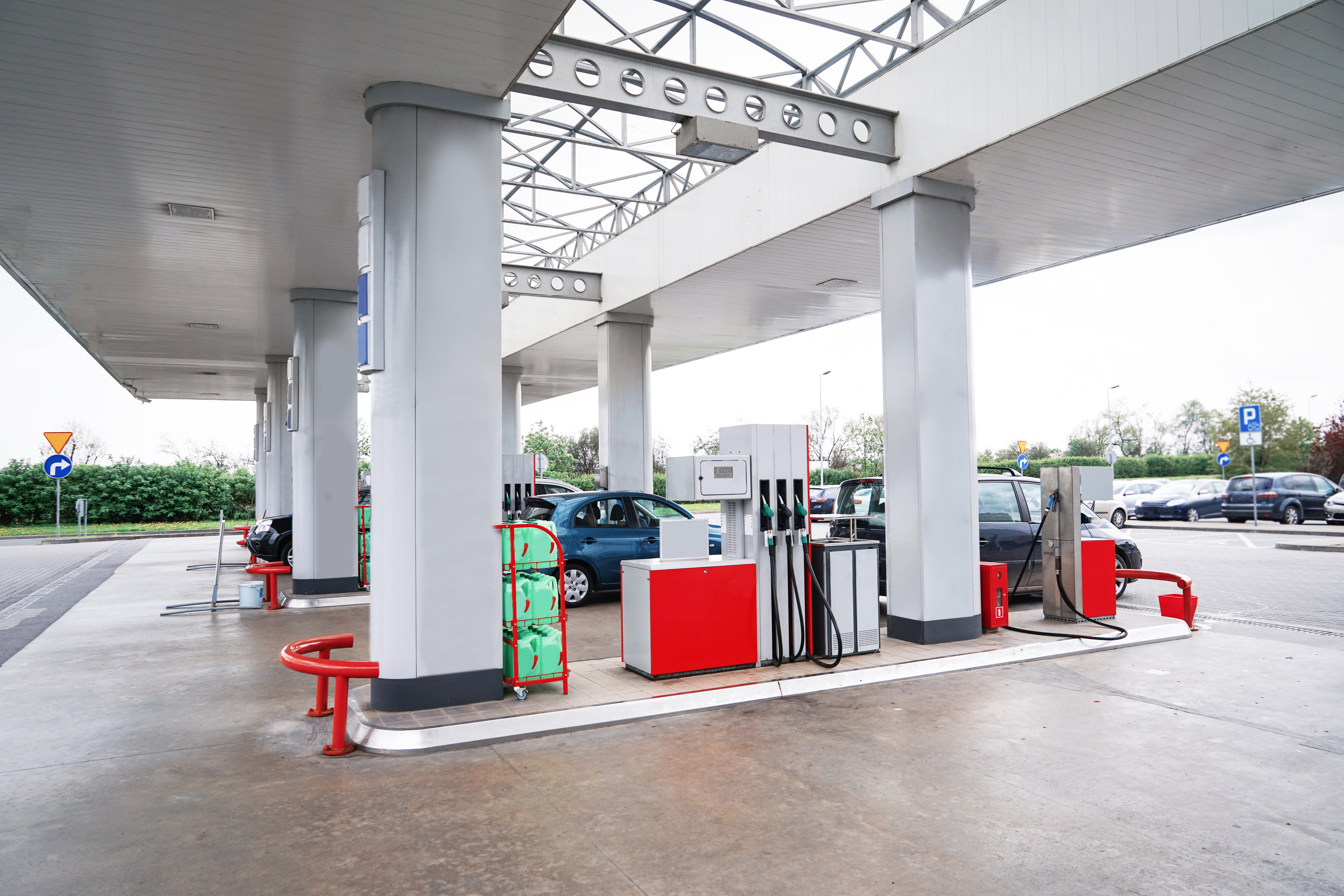

Together they show that the architectural ABC of canopy, pump and kiosk can be varied inexhaustibly, just like the petrol station that is always identical, is always different. Separately one might consider these photographs as landscapes and townscapes in which a petrol station happens to be. The photographs of Nico Bick focus on these objects that are so familiar that they are hardly noticed. The N and S approaches to the petrol station are unhindered due to the presence of a 30 m-wide. The turnover rate of styling of a petrol station is – not coincidentally – as fast as the cars that contantly stop there. It has four pumps for gasoline and diesel and one for motorbikes. Moreover, each house brand style is constantly changing: other pumps, an adaptation of the logo, a different shape and structure of the canopy, slightly different colors. National differences are reflected in the different brands, Agip in Italy, Elf in France and Aral in Germany, but also within a brand, the French petrol stations of Shell, for instance, are different from the Italian and Dutch stations. As one word can have many meanings, depending on the context in which it is used and at which intonation it is pronounced, every petrol station in the photographs of Nico Bick has its own identity. Despite this, it is astonishing how many differences and nuances there are in the design of a petrol station. AVUTEC Drive-off Prevention System is an ANPR solution to prevent fuel theft at petrol stations by comparing number plates to a blacklist of drive offs. Whilst in time most building types show an increasing variety and complexity, the petrol station traveled the opposite way in the direction of simplicity and uniformity. The architecture is thereby reduced from a means to carry the message to the message itself and the shape has continuously eroded until finally the indestructible core of canopy, pump and kiosk remained the ABC of universal petrol station architecture. To paraphrase the American design historian Thomas Hine: If architecture can be called frozen music, the petrol station is a frozen jingle. Since this period the petrol station can hardly be seen as architecture. From that moment on it was no longer the expressive form that made the petrol station recognizable, but the colors and logos that accentuated the distinction between the different brands. The heyday of the petrol station as an architectural landmark ended in the sixties when the laws of uniform house brand styles were enacted. Initially that trend continued in the first post-war years, when the station quickly became an everyday appearance. But when the petrol pump became a petrol station every effort was made to ensure it became a piece of attention grabbing architecture. Mostly the pump just stood by the kerb or in a yard. Before the Second World War a building was rarely assigned to a petrol pump. The petrol station that at first glance gives the impression of being identical everywhere is apparently easy to be overlooked.

At best they are used as a point of reference to guide the way: "Turn left after the petrol station!" This inconspicuous appearance contrasts with the size of the building and the intrusive neon-lit canopy. These lamps are very inefficient with a bad light output and also suffer from a short. Few people pay attention to them unless the petrol tank is nearly empty. Gas stations are mostly lit using conventional downlight fixtures.

We have the power, if such breaches are found, to take enforcement action, including the issuing of a compliance notice.P etrol stations play a subordinate role in our consciousness. If the prices you charge for services or products are different to the prices displayed, this constitutes a misleading price indication, and you may be in breach of the Consumer Protection Act. If you fail to display your prices, you may be in breach of the regulations. In addition, the actual price charged must match the price you display.The price displays for petrol and diesel should give the prices per litre.The figures appearing to the left of a decimal point on these notices must be at least 20 centimetres high. You must display the prices of your petrol and diesel, and this price display must be legible and visible to potential customers from the side of the road nearest your premises. This legislation is known as the Retail Price (Diesel and Petrol) Display Order, 1997 and is enforced by the CCPC. By law, petrol stations must display price notices on their premises.


 0 kommentar(er)
0 kommentar(er)
